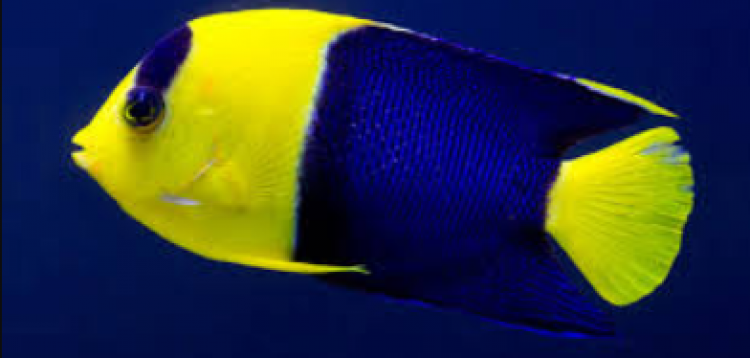- Name:
Goldflake Angelfish
(View AKA's) - Family: Pomacanthidae
- Species: Angel Large
- Scientific Name: Apolemichthys xanthopunctatus


General info about Goldflake Angelfish
The Goldflake Angelfish displays beautiful gold spots throughout the body. The mouth region of this angel is brightly colored in blue and the fins, which are black in color, are bordered by a striking blue. A single Goldflake Angelfish will do well in large tanks with plenty of hiding places. Once established, the Goldflake Angelfish may become territorial. This Angelfish is one of the safer choices of the large Angels for the reef aquarium and has proven not to pick on sessile invertebrates. This was once a very rare Angelfish to the hobby and has recently become available.
Goldflake Angelfish Diet & Nutrition
Goldflake angelfish are omnivores feeding on benthic algae, seaweeds, zoobenthos, sponges and tunicates in the wild. In captivity, a varied diet is also suggested for the nutrition of this lare angelfish. It is best that at least two thirds of their diet consists of vegetable foods, preferably from live rocks with plenty of algae growth, and the rest of their diet consisting of sponge, tunicates, and meaty food such as chopped fish and shrimp.
Determining Sex of Goldflake Angelfish
Sexual dimorphism not obvious with this species but males may be larger than the females.
Breeding & Spawning Goldflake Angelfish
Goldflake angelfish are known broadcast spawners releasing their eggs and sperms at dusk in the water column. Courtship for this species usually occurs at dusk, this then progresses to an ascent to the water column by the males followed by females which eventually lead to the release of gametes in the water column for external fertilization. During courtship the male will trail behind the female positioning his snout to near the female's abdomen.
The female will then turn to her side and both will release a white cloud of gametes containing the sperm and eggs. This spawning behavior is usually observed in large tanks such as in public aquariums.
Common Diseases with Goldflake Angelfish
Prone to White Spot Disease and Velvet Disease which causes blotchy coloration on the dark skin areas.
Also susceptible to the viral infection, Lymphocystis which resembles a cauliflower-shaped nodule on the fins and mouth which may prevent the fish from eating.
Apolemichthys xanthopunctatus is also prone to parasitic infections from monogenetic flukes acquired from live rocks in the aquarium.
Goldflake Angelfish Origin
This large angelfish is native to the Pacific Ocean and is widely distributed from the Gilbert Islands to the Line Islands. They are particularly found in the localities of Kapingamarangi Atoll (Micronesia), Canton (Kiribati), Nauru, Howland Island and Baker Island, Fanning Island and Christmas Island.
Caution with Goldflake Angelfish
They are considered a threat to anemones, LPS and SPS corals, soft corals, zoanthids, sponges and tunicates, and other sessile invertebrates.
Acclimating Goldflake Angelfish
It is best add Goldflake angelfish specimen in the aquarium that are sub-adult since they adapt to captivity faster, readily accepts a wider variety of aquarium food compared to juveniles that tend to be picky and reluctant.
They do well in aquarium setups with plenty of live rock for feeding and hiding, and an open area for 150 gallons swimming. These angels are semi-aggressive, thus it is best if they are the only angelfish in the tank and/or they should be the first larger angelfish to be added. Tank size must be at least 150 gallons.
Original Detail
| Name | Species | Family | Scientific Name | More Detail | Added by |
|---|---|---|---|---|---|
| Goldflake Angelfish | Angel Large | Pomacanthidae | Apolemichthys xanthopunctatus | The Goldflake Angelfish displays beautiful gold spots throughout the body. The mouth region of this angel is brightly colored in blue and the fins, which are black in color, are bordered by a striking blue. A single Goldflake Angelfish will do well in large tanks with plenty of hiding places. Once established, the Goldflake Angelfish may become territorial. This Angelfish is one of the safer choices of the large Angels for the reef aquarium and has proven not to pick on sessile invertebrates. This was once a very rare Angelfish to the hobby and has recently become available. |
PalaciosAn |
Changed by users
| Submitted Date | Submitted By | Status | Action |
|---|





